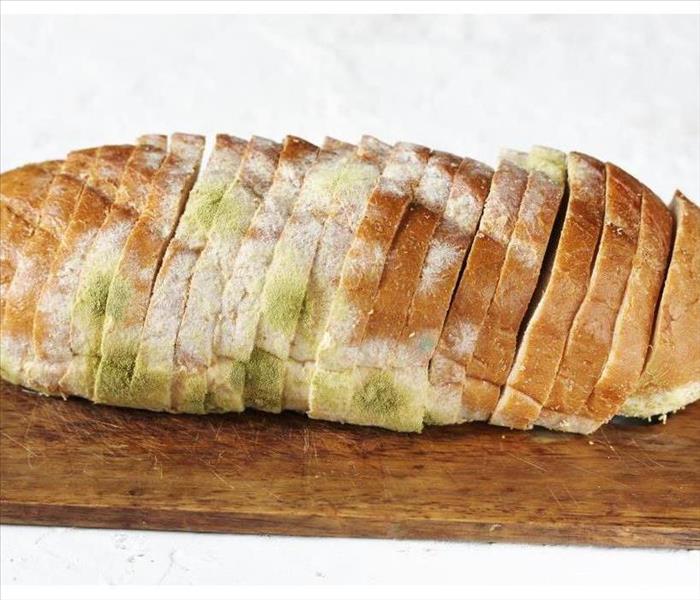Why Does Food Get Moldy?
9/23/2019 (Permalink)
How Does Bread Mold Begin to Grow?
What makes leftovers that are lurking in the back of the fridge turn into a science project? Mold is a microscopic fungus, a plant, that is found everywhere on earth, including Elburn, IL. We are surrounded by mold spores traveling through the air looking for a home.
Home Sweet Bread
Bread is an inviting host for traveling spores. White bread is made of simple carbohydrates that turn to sugar, which is a very efficient food source, and once a colony gets established, bread mold grows quickly. The best environment for mold growth is cool, damp and dark with poor air circulation — in other words, a refrigerator.
Chilling Out
As with other plants, mold can only survive in a limited range of circumstances. If temperatures are too cold, such as in the freezer, growth stops. Warm conditions, such as baking in an oven, have the same effect. But the humid, dark, still interior of a refrigerator is the perfect place for mold. The best way to prevent mold growth is to eat food while it is still fresh before fridge mold starts to grow.
Useful Mold
Mold is not always bad and has actually saved lives. For example, the antibiotic penicillin was first cultured from mold. Some cheeses, such as Roquefort and blue cheese, rely on mold for their distinctive flavor and appearance. A fungus growth on corn is called huitlacoche in Mexico and is considered a delicacy.
The next time you open a bag and find that bread mold has staked a claim, remember that mold is everywhere in the air around us. The only way to prevent it is to buy smaller amounts of food more frequently so that they can be eaten before mold growth starts. Failing that, you can freeze leftovers. In the event that you have a more serious mold problem, such as mold growth on drywall after a flood, then it's likely time to enlist the help of a professional mold remediation service.





 24/7 Emergency Service
24/7 Emergency Service
